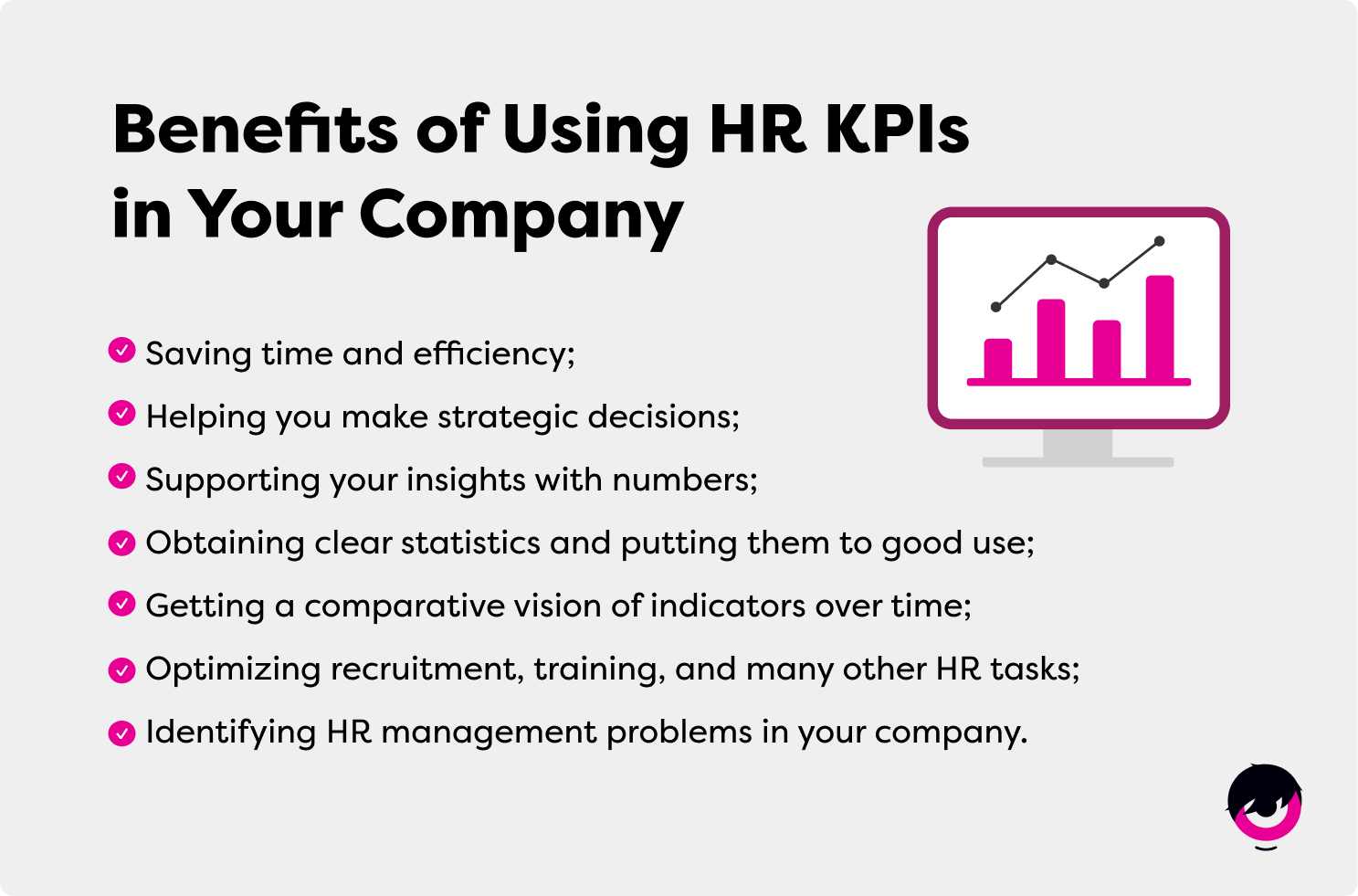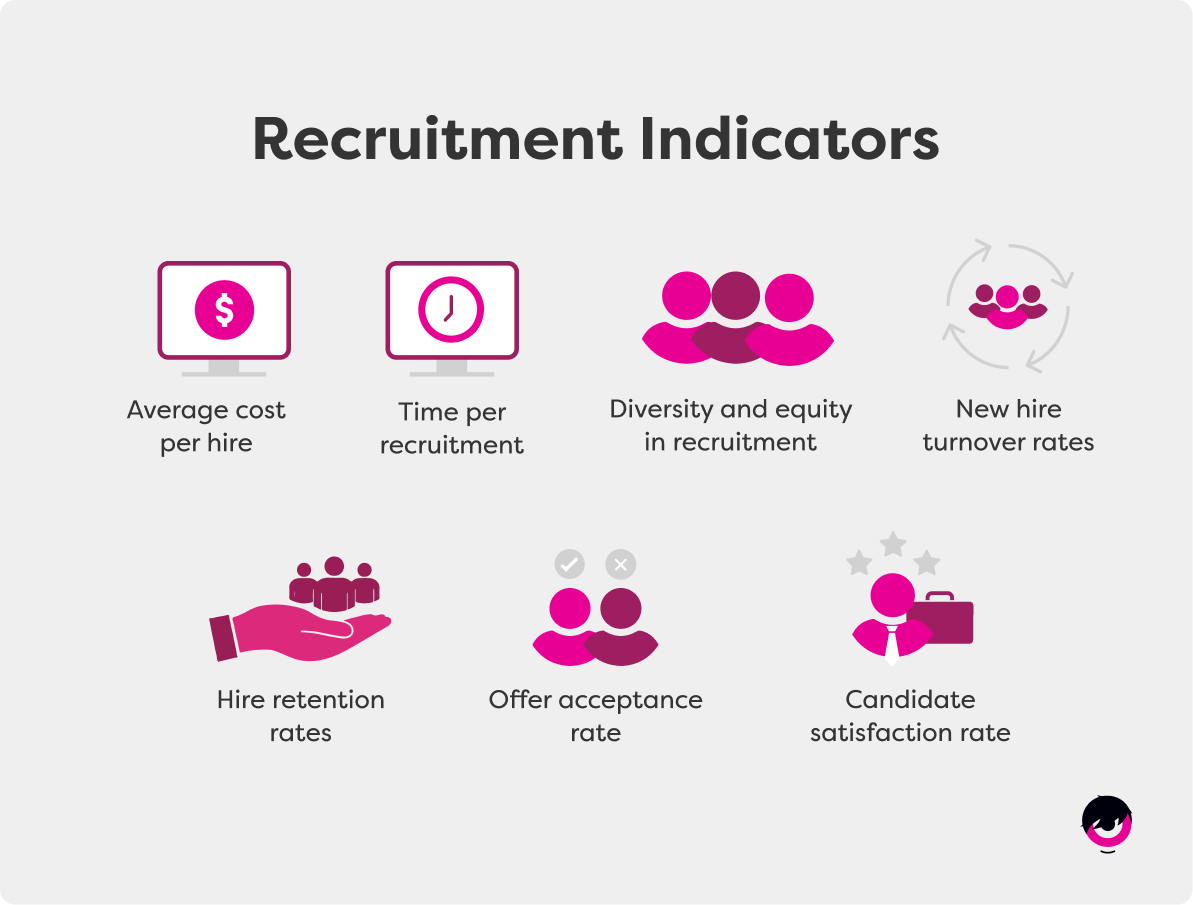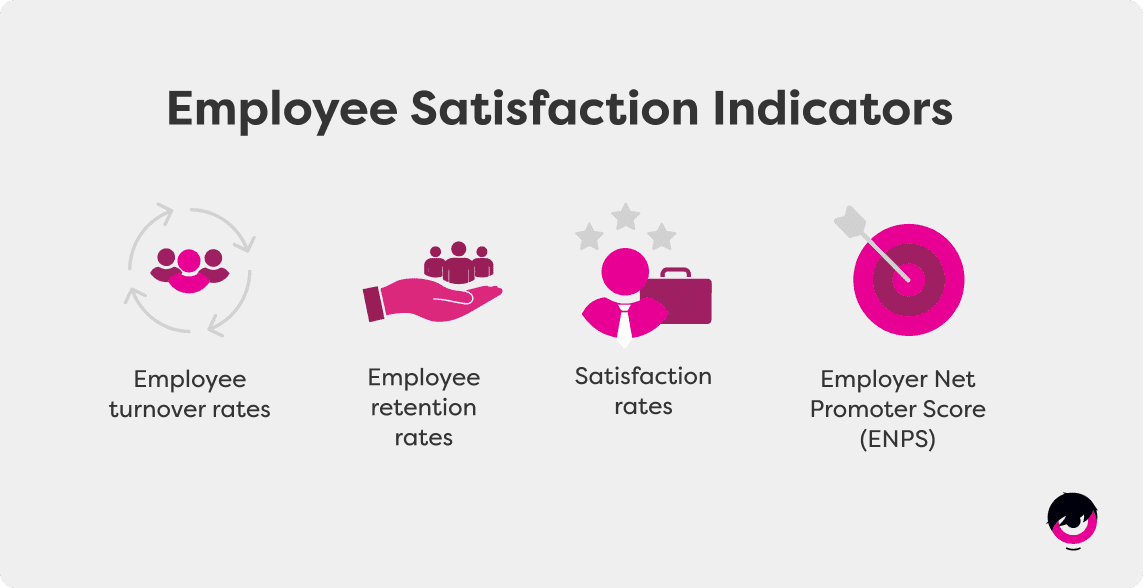HR reporting is a process which involves the strategic analysis of staff and company data, and is an essential aspect of productive and effective talent management.
By measuring and monitoring key HR metrics, you can track employee performance, optimize all your human resource management practices, pinpoint potential problems and guide your strategic decision-making. In short, HR reporting collects actionable insights that paint a portrait of organizational health at a given point in time. Of course, your reporting process can be updated at any time to keep pace with new workforce trends and business goals.
Find out the Key Performance Indicators you should track, and best practices for implementing effective HR reporting in your company.
What is an HR indicator?
HR indicators provide information and statistics on common HR metrics, thus helping you make data-driven decisions. Often centralized on the KPI dashboard of HR reporting software solutions, these key metrics enable the collection of HR data that contributes to your performance management and business objectives.

How to Select the Right HR Performance Indicators
When choosing which KPIs to track and prioritize in your organization, you need to consider your company’s needs and other essential criteria:
Alignment with Organizational Goals
Your KPIs must correspond to or contribute to business goals you have set for the year. For example, if one of your strategic targets is to reduce turnover rates in order to stabilize teams and departments and increase productivity, you need to keep an eye on your retention and turnover rates to optimize your employee retention strategies.
In the same way, an organization that is experiencing hiring difficulties and wants to improve the efficiency and profitability of its recruitment process can measure recruiting indicators such as cost per hire and employment offer acceptance rates.
Simplicity and Realistic Implementation
Let’s be honest: your HR department does not have the time or energy to calculate and track all existing performance indicators.
It’s important to be realistic in your HR reporting and to track only key metrics that will make a difference in your goals and strategies. These KPIs must be measurable and quantifiable within your company. If you have no way of measuring employee engagement levels, there’s no point in building an action plan on this specific aspect.
You should build your HR report step by step while focusing on simplicity and efficiency. Don’t forget to implement all the reporting tools you need to access your metrics and custom reports whenever you need.
Data Reliability
It is also essential to select reliable data that will not lead to errors or inefficiencies in your strategies. Your indicators must be accurate, free from human error, and relate to recent information. It makes no sense to build your current action plans on outdated data. You need to rely on HR indicators that are calculated and updated regularly or in real-time for truly effective HR reporting.
Benchmarking Possibilities
HR indicators are only useful if they can be used for benchmarking purposes. It’s often a good idea to continue monitoring the same performance indicators each year in order to analyze their evolution, and thus the effectiveness of your action plans. HR reporting is not a one-time action: for strategies that support HR transformation, you need to continue your efforts over the long term.
Types and Examples of HR KPIs
Want to know more about the types of KPIs available to you? Here are some key examples that can make all the difference to your HR reporting strategies:
Employee Productivity
- Productivity ratio: corresponds to the organization’s sales and revenue divided by the current employee headcount. This indicator gives you an overall view of company productivity and its growth over time.
- Objective attainment rate: based on individual or organizational objectives set during employee performance appraisals, and indicates whether your teams have succeeded in achieving them over a given period.
- Overtime rate: details the frequency and number of overtime hours worked by your teams, with the option of refining this data by department or team. This indicator can reveal productivity or management problems.
Recruitment Metrics
- Recruitment costs: this indicator tracks the amount of money and time spent on each hiring process.
- Offer acceptance rate: once you’ve sent your offer of employment to your potential recruits, you can track their acceptance and rejection rates.
- Diversity metrics in recruitment processes: provides an overview of the profiles recruited and the positions they occupy.
- Candidate and new hire satisfaction levels: measures satisfaction with recruitment processes, as well as with onboarding process offered to new hires.

Demographics and Payroll
- Average age and gender distribution of employees: age pyramid, visibility of employee gender and positions held for each category.
- Employment contracts: lists full-time and part-time employees, trainees, seasonal workers, etc.
- Evolution of payroll over time: tracks additions and losses of employees, as well as changes in the employee profiles who make up your organization over a given period.
- Workplace conflicts and accidents: helps you visualize the frequency of workplace accidents or conflicts between employees to identify risks to the mental and physical health of your teams.
Training and Professional Development
- Training costs and hours: visualize the budget and hours dedicated to training within the organization, by department and by team.
- Training success rate: tracks the effectiveness of training courses by determining whether employees have successfully completed them.
- Internal promotion rate: details promotions and internal mobility within the company to get an idea of the career advancement opportunities available to your employees.
Employee Satisfaction
- Employee turnover rate: indicates the number of employees who have left your company over a given period.
- Employee retention rate: indicates the number of employees who have stayed with your organization over a given period.
- ENPS (Employee Net Promoter Score): reveals the likelihood of your employees recommending your company to friends or candidates, based on your work environment and their level of engagement.

Essential Tools to Set Up Your HR Reporting
To ensure the reliability of all data and save time in data collection and analysis, you need to implement HR reporting software with intuitive dashboard and comprehensive report features. You’ll be able to analyze your HR indicators in just a few clicks, and receive notifications directly on your dashboard.
More than just HR software, Folks offers all-in-one human resources management solutions that include data-driven insights and support your decision-making process! Discover our complete HR management solutions today.
Improve all your HR processes with Folks’ reporting solution:
Track your key indicators and visualize your essential data on an intuitive dashboard!

